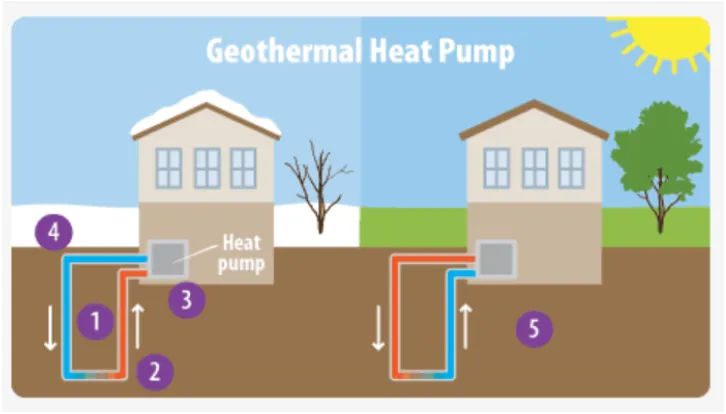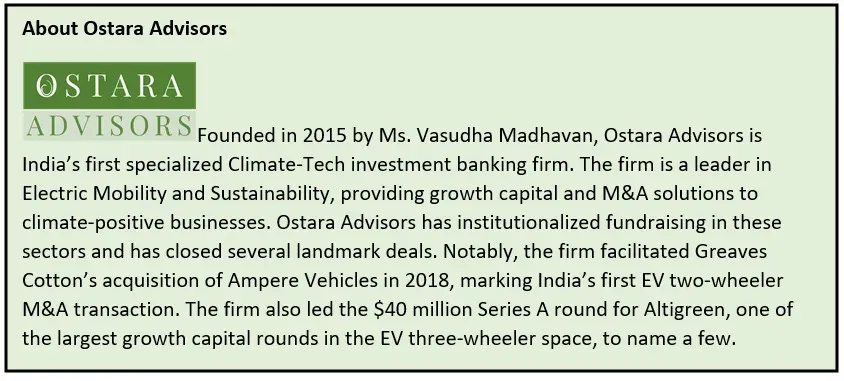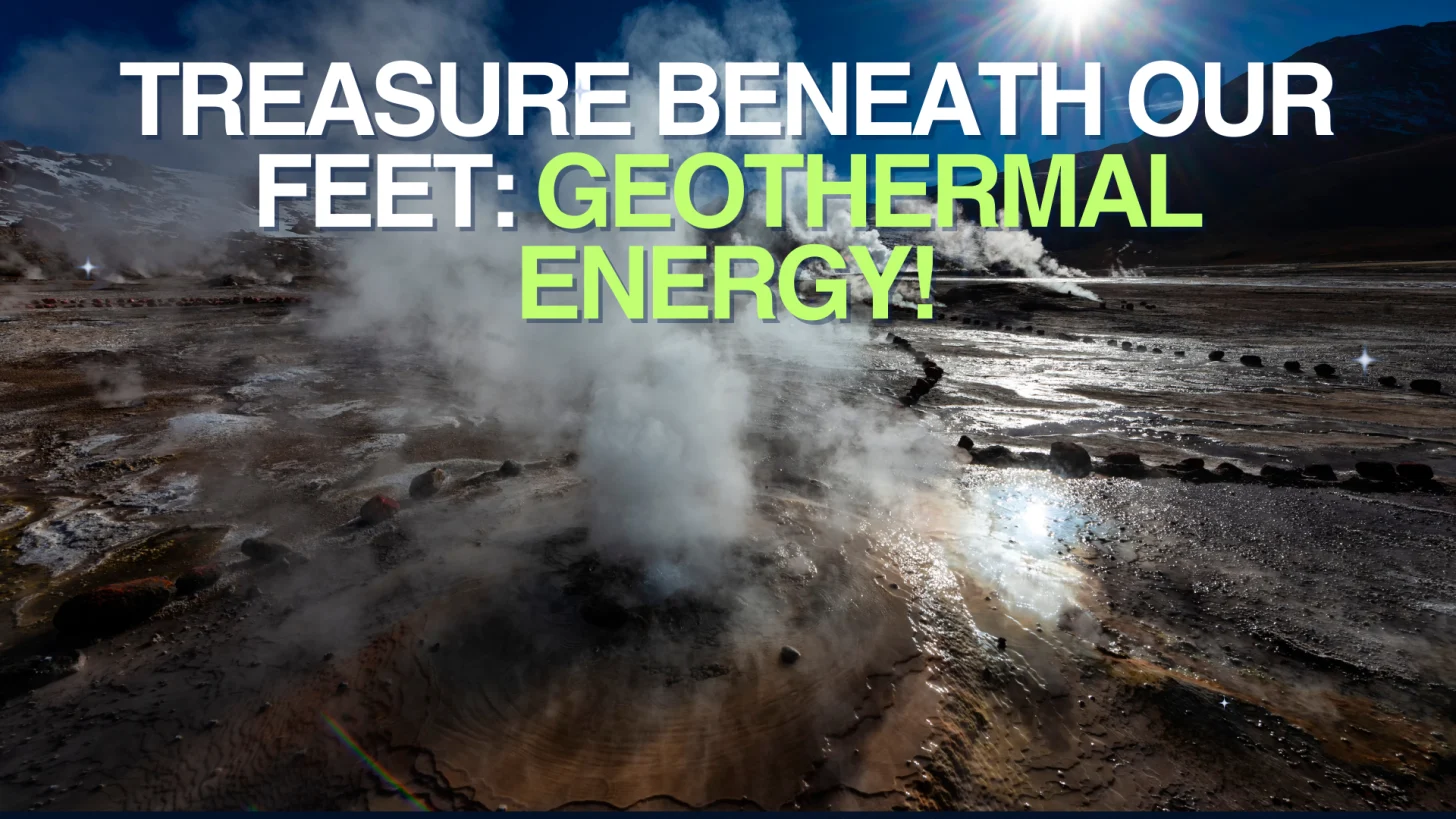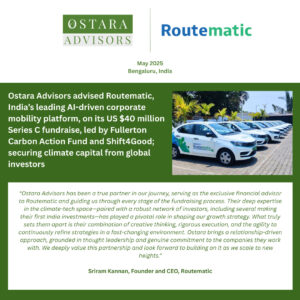Hidden beneath the Earth’s surface lies an untapped powerhouse—geothermal energy. Unlike solar and wind, which rely on weather conditions, geothermal energy provides a steady and reliable source of power, making it an unsung hero in the clean energy revolution. Let’s explore its two game-changing applications:
Crucial Applications of Geothermal Energy
Electricity Generation: The Unshakable Backbone of Renewable Energy
Geothermal energy is the ultimate team player in the transition to a greener grid. Why? Because it provides round-the-clock, dispatchable power—a perfect complement to the intermittent nature of solar and wind. With high-capacity factors of 75-80%, geothermal plants generate electricity far more consistently than solar PV (10-15%) or wind (less than 30%). This stability makes it invaluable in replacing coal power, ensuring a seamless transition to a low-carbon future.
Heating & Cooling: The Silent Climate Warrior
Beyond electricity, geothermal energy transforms how we heat and cool our homes, offices, and industries. From district heating systems warming entire cities to ground-source heat pumps that provide efficient climate control in individual buildings, geothermal is reshaping sustainable living. Unlike fossil fuel-based heating, which releases massive carbon emissions, geothermal heat is clean, renewable, and available virtually everywhere.
The below diagram shows the versatile uses of geothermal energy across different temperatures:

(Source: IEA The Future of Geothermal Energy report)
How does Geothermal Energy work?
Geothermal energy uses the Earth’s natural heat. Here’s how it works:
- Electricity Generation:
- Wells are drilled deep into the Earth to access hot water or steam.
- The heat from this water turns it into steam.
- The steam drives turbines, which generate electricity,

(Source: EPA)
2. Heating & Cooling:
- Heating: In winter, geothermal heat pumps extract heat from the Earth and bring it into buildings to warm them.
- Cooling: In summer, the system absorbs excess heat from buildings and transfers it back into the Earth to cool them down.

(Source: EPA)
3. Direct Use: Geothermal wells can provide hot water directly for heating buildings, growing plants in greenhouses, or even drying materials like paper or lumber.
Market Overview for Geothermal Energy
In 2023, Geothermal energy accounted for nearly 0.8% of global energy demand, with global geothermal power capacity increasing by almost 40% over the past decade to reach 15 gigawatts (GW). Ownership of geothermal assets is primarily in the hands of publicly traded or private firms, which control over 70% of installed, under-construction, and planned capacity. However, state-owned enterprises also play a significant role, accounting for nearly 30% of total geothermal capacity.
Looking ahead, global conventional geothermal capacity is projected to increase nearly 50% to 22 GW by 2030 and could reach almost 60 GW by 2050, according to the IEA Stated Policies Scenario. The use of geothermal resources for heating is expected to expand significantly, doubling by 2030 and tripling by 2050.
Global Investments in Geothermal Energy
Investment in geothermal power and heating exceeded USD 47 billion in 2023, representing over 5% of total spending on renewable energy projects. The majority of this investment—over 95%—is directed toward heating applications, including ground-source heat pumps. China led the sector, contributing to more than 70% of all geothermal investments during the year. Additionally, early- and growth-stage investments in next-generation geothermal technologies have surged, rising from negligible levels to over USD 420 million annually in 2023. The geothermal energy space has been seeing lots of interest in the USA recently with a few investments compiled below:

(Source: News articles)
Geothermal energy in India
India has an estimated geothermal potential of 10,600 MW, with key geothermal provinces spread across Ladakh, Chhattisgarh, Himachal Pradesh, Jharkhand, Uttarakhand, and Telangana. The country’s first geothermal power plant, a pilot project in Puga, Ladakh, marks an initial step in harnessing this renewable resource.
The Ministry of New and Renewable Energy (MNRE) is actively promoting geothermal exploration, identifying promising locations for future power plants. Telangana has also signed an MoU with Geo Thermal Core to develop its first geothermal project in Manuguru.
Though still in its early stages, India’s geothermal sector is gaining momentum, with ongoing research and pilot projects paving the way for future large-scale adoption.
A Key Player in our Clean Energy Future
Geothermal energy has the second-largest technical potential for electricity-generating capacity, just after solar PV, with nearly 600 TW of capacity. In terms of capacity factors, geothermal power plants outperform other renewable sources, with a global average capacity factor of over 75% in 2023, which is much higher than wind power (less than 30%) and solar PV (less than 15%).
By providing both dependable electricity and sustainable heating & cooling, geothermal energy tackles two of the largest sources of global emissions. It is a 24/7 clean energy source, reducing reliance on fossil fuels while ensuring a reliable and resilient power supply. Since it draws heat from the Earth’s core—a virtually limitless resource—it remains one of the most sustainable and long-term energy solutions available. As the world races toward net zero, this hidden resource beneath our feet might just be the key to a truly sustainable future.
Ostara in the News
- Vasudha’s insights were featured in Tech in Asia in an industry piece exploring why Indian EV startups like Zypp and Kazam are expanding into Southeast Asia on January 31, 2025.

















